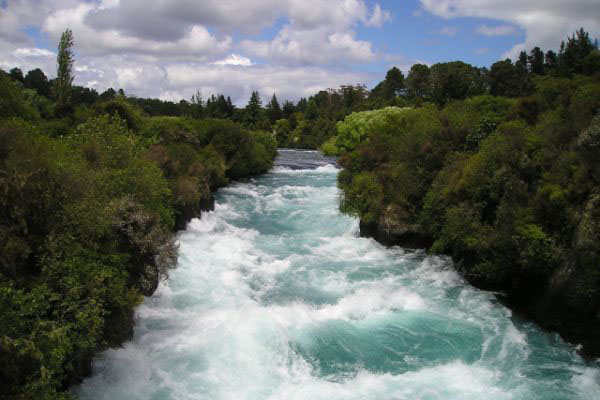Articles / Sustainability / Water reuse / Water technology
Global Nature Positive Summit 2024
Global Nature Positive Event
September 24, 2024
Global Nature Positive Event
Global Nature Positive Event
The world’s first Global Nature Positive Event takes place in Sydney, Australia 8 – 10 October.
It will bring together leaders from governments, the corporate sector, environmental organisations and Indigenous Peoples. Delegates will probably mainly be from the APAC region, although there are ambitions to make it a worldwide event.
It promises to explore effective ways to realise commitments made a few years ago in the Kunming-Montreal Global Biodiversity Framework. Read on for more details of that.
In Australia until recently, environmental issues have not been given the prominence that they have had in other parts of the world. This conference – sponsored by the Australian federal and the New South Wales state governments – is part of a push-back to regain its environmental authority in APAC and we suspect, to align Australia with more environmentally conscious countries.

The Global Nature Positive event will be held in Sydney, Australia on 8-10 October 2024
Global Nature Positive Summit 2024
Australia’s Minister for the Environment and Water, Tanya Plibersek acknowledges that Australia’s role in environmental conservation has been patchy when she states on the Global Nature Positive website:
‘Transitioning from nature destruction to nature repair, will require a mighty global effort. We need government leading the way, but we also need the private sector, environmentalists and First Nations groups all pulling in the same direction.’
The mention of Indigenous Peoples / First Nation groups is telling as the organisers appreciate that they were the original guardians of the land and without their buy-in, any plans put forward will struggle to succeed. These groups also manage a large amount of land in Australia.
In addition, Penny Sharpe, the Minister for Climate Change, Energy, the Environment and Heritage of the New South Wales government says on the site:
‘Government and community cannot simply be the managers of steady environmental decline – we must be the stewards of actively protecting what’s left, turning around the loss and restoring biodiversity.
Our goal must be to leave nature better off than we have found it.’
So, with government backing and a new environmental push under Australia’s Labor Government, the stage is set for actioning the main points of the Kunming-Montreal Global Biodiversity Framework.
Organisers hope that a ‘nature-positive’ Australia will have multiple benefits and intend to protect 30% of Australia’s land and seas by 2030 as well as adding 2.3 million hectares to the national reserve system through Indigenous Protected Areas.
Amongst other initiatives, they will also establish a Nature Repair Market – essentially a trading system for environmental improvements and conservation.
The Kunming-Montreal Global Biodiversity Framework
The Convention of Biodiversity is a UN-supported organisation with its corporate HQ in Montreal, Canada. In 2022, the Kunming-Montreal Global Biodiversity Framework (GBF) was established.
Essentially this is a Framework which sets the agenda for sustainable development and aims to halt and reverse the ongoing loss of terrestrial and marine biodiversity by 2030. It was – adopted in December 2022 at the 15th meeting of the Conference of the Parties to the Convention on Biological Diversity (CBD).
The Kunming-Montreal Global Biodiversity Framework is built around a theory of change which recognises that urgent policy action is required globally, regionally and nationally to achieve sustainable development so that the drivers of undesirable change that have exacerbated biodiversity loss will be reduced and/or reversed to allow for the recovery of all ecosystems and to achieve the Convention’s Vision of living in harmony with nature by 2050.
As a brief translation of this ‘UN-speak’, this means that everyone thinks biodiversity is important and everyone needs to pull together to do something about it. If you are interested, the full text of this agreement can be read here.
What are the Current Environmental Issues?
So, what does this mean in practical terms? What relevance does this have to the pressing environmental issues challenging our planet?
Well, at least now there’s an acknowledgement of the issues and how pressing they are. After all the Kunming-Montreal Agreement aims for a reversal of biodiversity loss by 2030.
But will yet another ‘talking shop’ solve the planet’s issues?
From a delegate’s point of view, Sydney in the Spring is great place to go, but there is no mention on the site of any carbon offsetting for the travel and accommodation requirements of delegates, organisers or the press.

The event will build understanding of changes required to systems and settings to value nature and address biodiversity loss.
Climate Change and Water Crisis
Meantime, our planet’s current environmental issues continue unchecked:
- Microplastics and PFAS (‘forever chemicals’) continue to pollute the oceans as most countries still do not ban them in wastewater. As a direct result, rainwater is now more polluted than at any time in the past.
- Forest fires are still raging in Amazonia, depleting the world’s biggest absorber of CO2 and drying up the Amazon River.
- Carbon emissions are on the rise and many developed countries like the UK and Europe are rolling back on their commitments for environmentally-friendly initiatives like clean power and BEVs (Battery Electric Vehicles.)
Ocean Pollution
One of the world’s worst environmental issues is happening by stealth. Notwithstanding Greta Thunberg, Feargal Sharkey, Greenpeace and a phalanx of followers, this practice is carrying on with hardly any regulation to curtail it.
This is the industrial discharge of polluted water laden with dangerous ‘synthesised’ chemicals that conventional water treatment struggles to remove.
These chemicals include:
- Endocrine Disruptors: These are found in many everyday products, including some cosmetics, food and beverage packaging, toys, carpet, and pesticides. They have been shown to cause major damage to marine and human life including reproductive issues.
- PFAS: These are known as ‘forever chemicals’ as it’s almost impossible to break them down. They can lead to health problems such as liver damage, thyroid disease, obesity, fertility issues and cancer. They are found in cookware, water-repellent clothing, stain resistant fabrics, some cosmetics, and products that resist grease, water, and oil.
- Antibiotics: Anti-Microbial Resistance (AMR) threatens the effective prevention and treatment of an ever-increasing range of infections caused by bacteria, parasites, viruses and fungi. This is caused by over-prescribing of antibiotics for humans and animals, and improper disposals.
Importance of Water Treatment
One of the water treatment techniques that has shown success in treatment of these hazardous synthesised chemicals is electrochemistry. Although not a new process, recent advances in materials and techniques have shown remarkable results.
Electrochemical treatments can be added to existing water treatments or used as side-chains to condition water, making other conventional treatments more effective.
It’s to be hoped that delegates at October’s Global Nature Positive Summit consider the ‘hidden killers’ being discharged by the megalitre daily by industry worldwide.
Discharge regulations are currently well behind the science, so let’s hope this conference acts as a spur to update them.
More featured articles
01.31.2023

We discuss sustainable water management and how specific industry sectors would benefit by adopting water stewardship.
07.7.2021

Why any company that discharges water needs to be ready to be put under the microscope.
03.16.2021

The scarcity of water is pushing up its price. As a result, water recycling is becoming increasingly important in many industries. In this article we examine how Arvia’s unique technology can be a vital part of a cost-effective water recycling system in pharma.
Our wastewater treatment expertise
Our water technology can be used to treat a variety of water treatment applications. Once we understand the nature of your wastewater and your final water quality target, our water treatment specialists can make recommendations as to how best to treat your water. Take a look at some of the Nyex applications here:
Need help? Speak with an expert